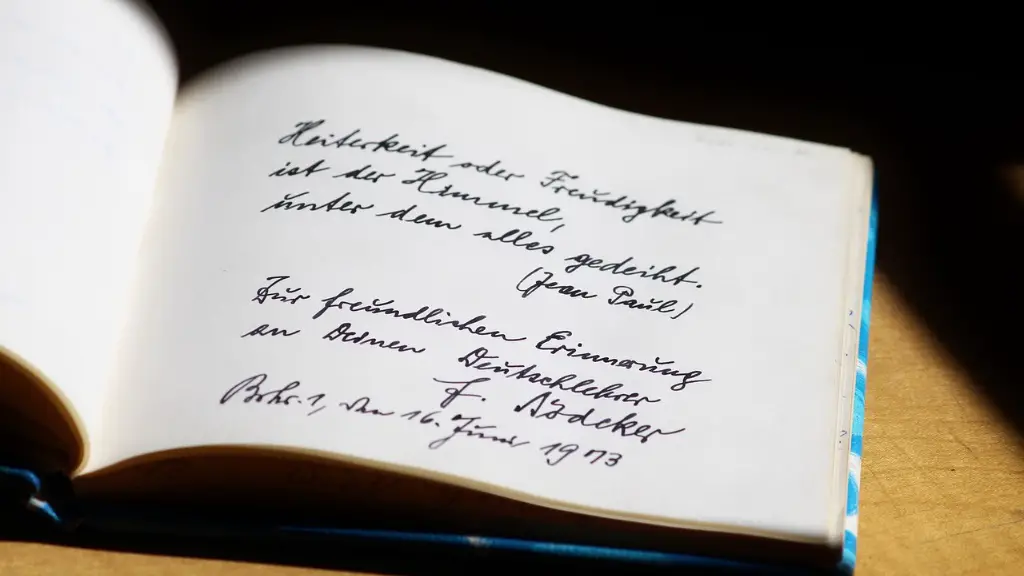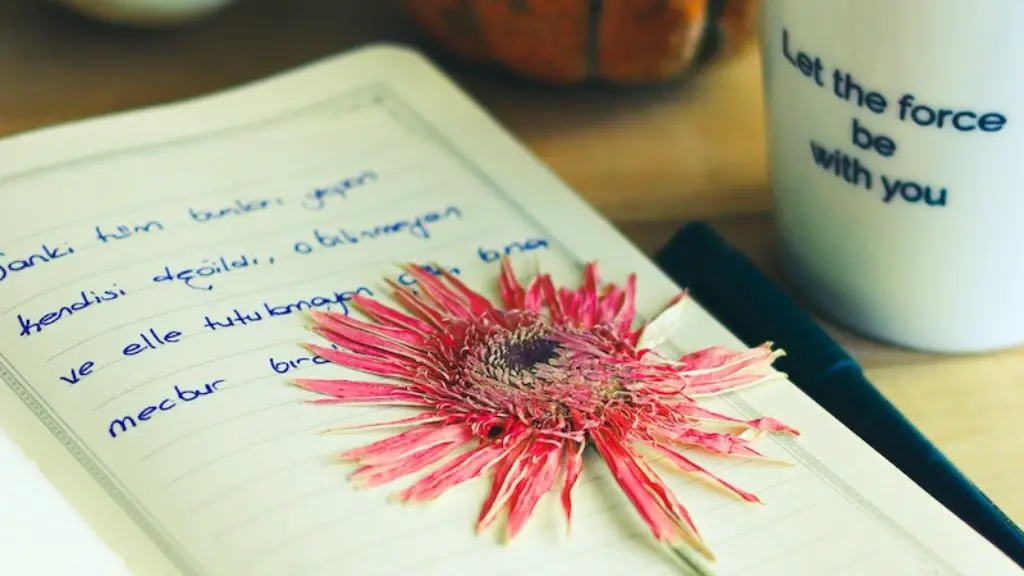Formatting poetry in HTML requires two key elements: structure and styling. The structure of the poem should be superimposed on an HTML document, while styling is used to enhance the look and feel of the poem. There is a range of HTML elements and attributes that can be used to format poetry, including
tags,
tags and
The
tag is one of the most commonly used tags to format poetry. It is used to enclose a line of poetry within a paragraph element. For example, the following HTML code would create a paragraph with a poem written by the 19th century poet John Keats:
A thing of beauty is a joy forever:
Its loveliness increases; it will never
Pass into nothingness.
The
tag is another important feature of formatting poetry in HTML. It is a self-closing tag, which means that it does not need an end tag. The
tag functions as a line break, allowing poets to separate lines of poetry without starting a new paragraph. This is useful for formatting long stretches of poetry so that it is easier to read on the web.
The div tag is used to create divisions in an HTML document. It is a container tag, which means that it has an opening and a closing tag. When formatting poetry in HTML, the div tag can be used to enclose a group of poem lines, such as a stanza. This makes it easier to format the poem and to distinguish different sections of the poem.
Styling poetry in HTML is often done with the help of Cascading Style Sheets, or CSS. CSS is a style sheet language used to format the presentation of web documents. With CSS, you can control the font size, line spacing, color, and more. By taking advantage of CSS, you can make the poem look the way you want it to, enabling you to create a unique reading experience for visitors to your website.
The following code snippet shows how you can use CSS to style poetry in HTML:
CSS can also be used to add visual elements to a poem, such as images, animations, and more. By taking advantage of the various CSS techniques, you can create unique visual experiences for your online readers.
The final element of formatting poetry in HTML is to use a validator to check that the HTML code is valid. By using a validator, you can ensure that the code is compliant with the standards defined by the World Wide Web Consortium (W3C). This will help you to make sure that your poem is formatted correctly and looks its best.
Adding Links to Poetry
In addition to traditional formatting, HTML can also be used to add interactive elements to poetry, such as links. Links in poetry allow readers to explore more information related to the topics in the poem. For example, if the poem is about a historical event, readers may be able to click on the link to access more information about the event.
Links in poetry can be added in a variety of ways. One of the simplest ways is to use an anchor tag, which is an HTML element that uses the tag. The anchor tag takes a URL as an attribute, and this URL will be the destination of the link.
The following example shows how to use the anchor tag to add a link to a poem:
Link to example.com
In this example, the URL “http://example.com/” will be the destination of the link. When a reader clicks on the link, they will be taken to this site.
Another way of adding links to poetry is through the use of JavaScript. By using JavaScript, you can create interactive elements that allow readers to discover more information about the topics in the poem. For example, you could add a button that reveals additional information about a character or setting.
Using Markdown Text Formatting
Markdown is a text formatting language that was designed to make it easier to write documents in plain text. It uses a set of conventions such as symbols, marks and indentation to add structure and formatting to text. Markdown is particularly useful for formatting poetry, as it enables poets to quickly and easily add structure to poems and make them look their best.
The following code snippet shows how to format a poem in Markdown:
# Poem
1. A thing of beauty is a joy forever:
Its loveliness increases; it will never
Pass into nothingness.
2. I die for beauty, but I’m doubly denied:
Beauty is for the gods– and so I abide.
Markdown makes it easy to add structure to poetry and also to add styling. For example, you can use the pound sign (#) to add headers, the asterisk (*) to format italic text, and the plus sign (+) to format bold text.
Publishing Poetry with WordPress
WordPress is an open source platform for publishing content on the web. It can be used to format and publish poetry easily and quickly. WordPress has a selection of plugins designed specifically for formatting poetry, such as Poetry Formatter and WP Poetry. With these plugins, you can format your poems with ease and also add visual elements to them, such as images and animations.
In addition to formatting poetry, WordPress also makes it easy to publish it. Poems can be published as blog posts, pages, or even as a dedicated poetry section on a website. WordPress also has a range of themes that can be used to give poets complete control over their website’s design.
Developing a Poetry Reading App
Poetry apps are becoming increasingly popular as they provide a great platform for poets to reach a wider audience. There are a range of tools and services available for developing poetry reading apps. One of the most popular is PhoneGap, a platform for developing native mobile apps for multiple devices.
When developing a poetry app, it is important to take into account the different devices that it will run on. This will determine how the app should be laid out and how it should interact with the user. For example, it may be necessary to use larger fonts and simpler animations on small mobile devices.
It is also important to consider the formatting of the poems. They should be formatted correctly and laid out in a way that is easy to read. Appropriate use of HTML tags and styling will make the poem look professional and will improve the user experience.
Marketing Poetry
Creating content is one thing, but marketing it is quite another. With the advent of social media, poets have new and powerful tools for marketing their work. Social media platforms such as Twitter and Facebook are ideal for poets, as they provide a platform for sharing poems, finding new readers, and engaging with the poetry community.
In addition to social media, poets should also consider creating an email list. This allows them to stay in touch with their readers and keep them informed of new poems and events. Additionally, poets should consider creating their own website, where they can share their work and promote their events.
Promoting Poetry Events
Organizing and promoting events is an essential part of any poet’s practice. It is important to be creative when promoting poetry events, as it allows you to reach a wider audience. Social media is an obvious choice, but other platforms such as print newspapers, posters, and online advertising can be used as well.
Additionally, it is important to create an engaging experience for attendees. This can be done by providing a multimedia experience, such as videos, music, or art. This will make the event more interesting and engaging for attendees.
Finally, it is important to use effective marketing techniques to promote the event. This includes using keywords to target the right audience, creating appealing visuals, and using language that appeals to readers. By taking advantage of these techniques, you can ensure that your event gets the attention it deserves.


